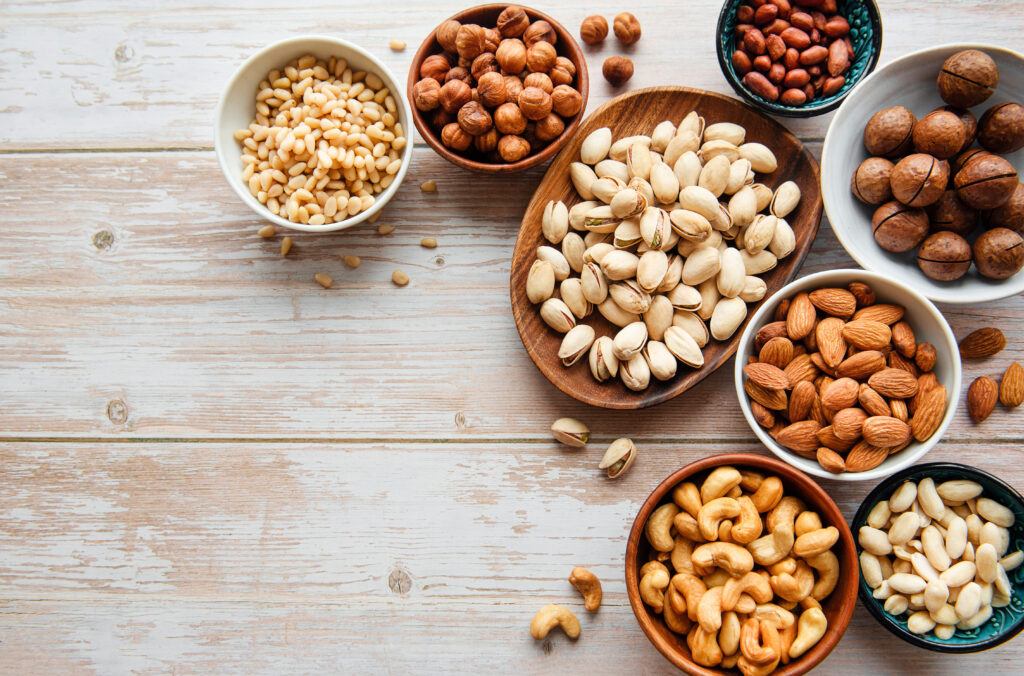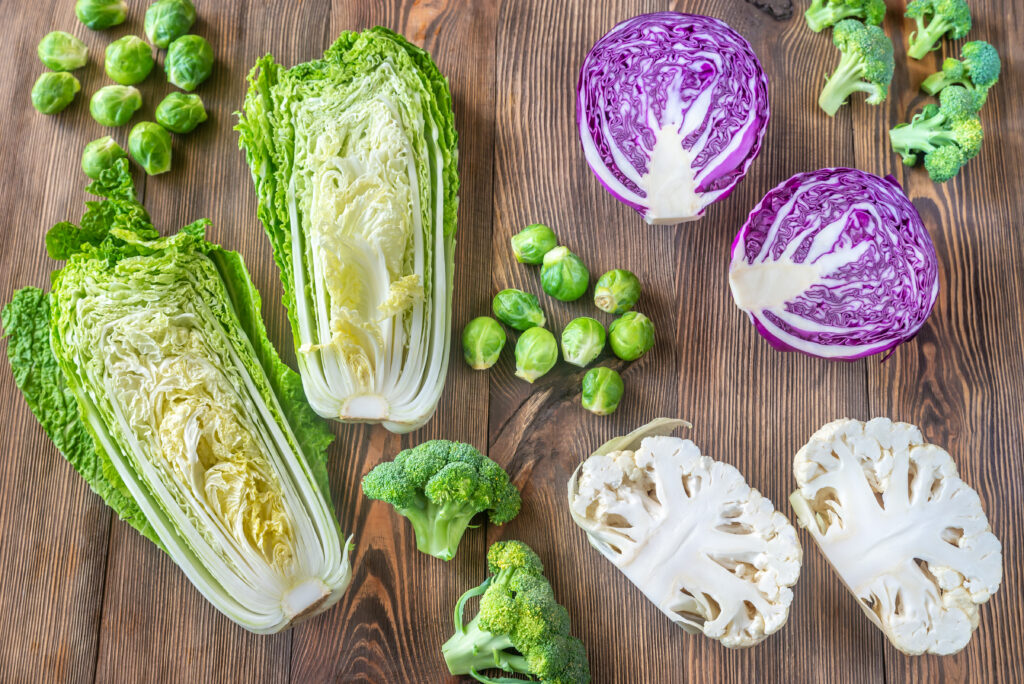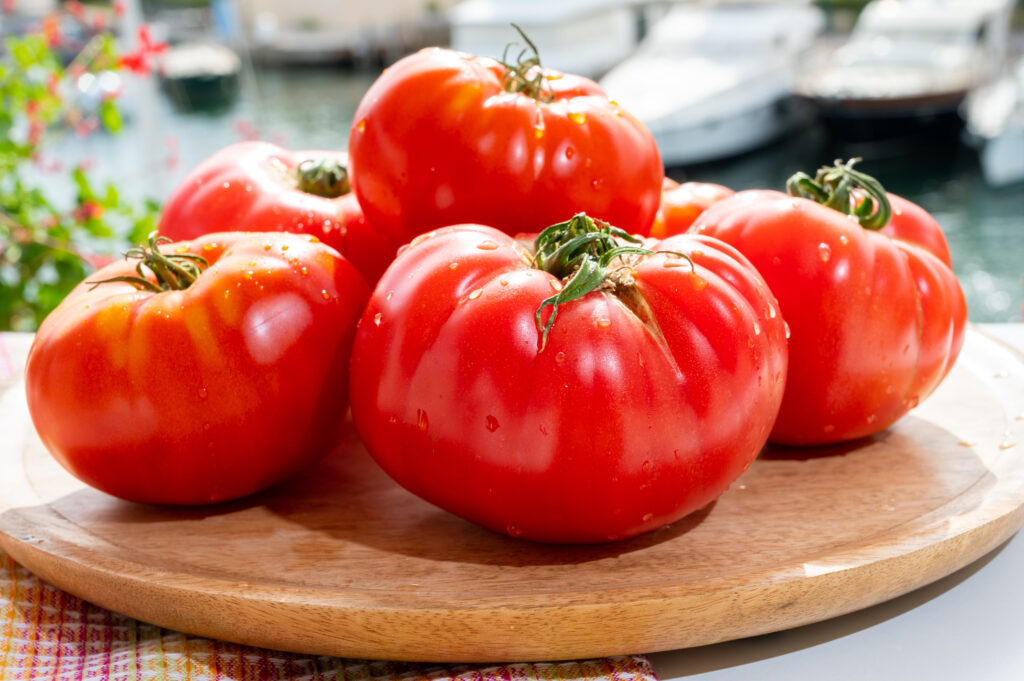Managing blood sugar levels is essential for overall health, especially for individuals with diabetes. High blood sugar, or hyperglycemia, can lead to serious health complications over time.
Fortunately, there are several natural ways to manage and lower blood sugar levels, particularly through dietary choices.
Though the development and management of diabetes are influenced by factors like genetics, diet, and exercise, nutrition plays a key role in its prevention and management (1).
Certain foods, when incorporated into your daily routine, can help regulate blood sugar, improve insulin sensitivity, and reduce the risk of diabetes-related complications.
In this blog, we will explore 18 foods that are beneficial for lowering blood sugar and improving overall health.
Foods That Reduce Blood Sugar Levels
1. Kiwi
Kiwi is a nutrient-dense fruit that may help regulate blood sugar levels. Rich in fiber and antioxidants, it has a low glycemic index, meaning it causes a slower rise in blood sugar.
A study examined how kiwifruit affects blood sugar when consumed with cereal starch. Participants consumed meals with starch and different kiwifruit components. Whole kiwifruit pulp reduced blood sugar spikes by 50% and prevented late hypoglycemia, with fiber and organic acids contributing to the anti-glycaemic effect.
Dietary fiber, fructose and organic acids reduced blood sugar levels by reducing intestinal absorption rate.
The fruit’s high vitamin C content may also play a role in improving insulin sensitivity by reducing oxidative stress.
Including kiwi in a balanced diet can be beneficial for those looking to manage or reduce their blood sugar levels.
2. Berries
Berries are a fantastic source of fiber, vitamin C, and polyphenols. Research shows they can improve insulin sensitivity, helping to lower blood sugar levels.
The fiber in berries also helps to regulate the digestive process, preventing blood sugar spikes after meals.
In a study with overweight individuals, consuming mixed berry preparations (whole berries or berry juice) led to a lower insulin response after a meal compared to gelatin treatments. Although the effect on blood glucose wasn’t statistically significant, berries may help improve insulin levels.
In addition to mixed berries, studies suggest that berries like strawberries, blueberries, blackberries, and raspberries could have a significant effect on blood sugar levels (4, 5, 6, 7).
By adding a handful of fresh berries to your breakfast or snacks, you can satisfy your sweet tooth while supporting your blood sugar health.

3. Nuts
Nuts, such as almonds, walnuts, and brazilnuts are rich in healthy fats, protein, and fiber, which stabilize blood sugar levels by slowing down the absorption of carbohydrates and preventing rapid increases in blood sugar after meals.
Research suggests eating more nuts may help prevent and manage diabetes. Some studies link higher nut intake, especially walnuts and peanuts, to lower Type 2 diabetes risk. Nuts may also improve blood sugar control, reduce cardiovascular risk, and lower HbA1c levels. However, more research is needed.
Additionally, the high magnesium content in nuts contributes to better insulin sensitivity.
Eating a handful of nuts or sprinkling seeds over your salad or smoothie can be an easy and effective way to support blood sugar regulation.
Want to check the most common types of nuts and their role in blood sugar management? Click here!
4. Whole Grains
Whole grains like oats, quinoa, brown rice, and barley are high in fiber and essential nutrients, making them an excellent choice for people with diabetes.
Unlike refined grains, which can cause blood sugar spikes, whole grains release sugar slowly into the bloodstream, preventing sharp increases in blood sugar levels.
A review of 47 studies found that eating 150 g/day of whole grains reduces Type 2 diabetes risk and improves blood sugar, HbA1C, and insulin resistance. Moreover, multiple whole-grain types were more effective than single types.
Choosing whole grains over refined grains is a simple yet effective dietary change to promote better blood sugar management.
5. Cinnamon
Cinnamon is a well-known spice with a variety of health benefits, including its ability to help lower blood sugar.
The compounds in cinnamon mimic insulin’s effects, making it easier for cells to absorb glucose.
In a study of 154 diabetic patients, taking 1.5 g/day of cinnamon for 120 days reduced fasting blood sugar by 35.5% and HbA1c by 0.85%. It also significantly inhibited PTP1B enzyme activity, showing promising effects alongside standard treatments.
A lower HbA1c indicates better long-term blood sugar control.
A lower PTP1B level suggests improved insulin sensitivity and better blood sugar control.
Adding cinnamon to your meals, such as sprinkling it on oatmeal or adding it to smoothies, is a great way to incorporate this blood sugar-friendly spice into your diet.
6. Garlic
Garlic is not only a flavorful addition to many dishes, but it also has powerful medicinal properties.
The active compounds in garlic, such as allicin, may help enhance insulin function, allowing for better blood sugar regulation.
A meta-analysis found that garlic supplements could significantly reduce fasting blood glucose, HbA1c, total cholesterol, and LDL cholesterol, while increasing HDL cholesterol, making it beneficial for managing blood sugar and lipids. However, garlic had no significant effect on triglyceride levels.
Including garlic in your diet, whether in cooking or as a supplement, can be an effective way to manage blood sugar and reduce the risk of complications associated with high blood sugar.
7. Apple Cider Vinegar
Apple cider vinegar (ACV) is a popular natural remedy that has been shown to help lower blood sugar levels.
Several studies suggest that consuming ACV before meals can improve insulin sensitivity and reduce blood sugar spikes after eating.
The acetic acid in vinegar helps slow down the absorption of carbohydrates, preventing rapid increases in blood sugar.
A meta-analysis of nine studies showed that apple cider vinegar significantly reduced total cholesterol, fasting blood glucose, and HbA1c. The review also suggests that ACV was more effective in type 2 diabetes patients and with longer use. However, it had no significant effect on LDL-C, HDL-C, fasting insulin, or HOMA-IR.
Adding a tablespoon of apple cider vinegar to a glass of water or using it as a salad dressing can be an easy and effective way to incorporate ACV into your daily routine.

8. Avocados
Avocados are an excellent source of monounsaturated fats, fiber, and potassium.
These healthy fats help regulate blood sugar levels by improving insulin sensitivity and slowing the absorption of carbohydrates.
Avocados are also low in sugar, making them a great option for those looking to maintain stable blood glucose levels.
A 12-week study examined how replacing carbohydrate foods with avocado affects glucose control and heart health in adults with overweight or obesity and insulin resistance.
Results showed that avocado intake improved diet quality, suggested better blood sugar control, reduced inflammation, and lowered certain heart risk markers, but had no significant impact on insulin sensitivity.
Additionally, the high fiber content in avocados helps improve digestion and promotes a feeling of fullness, which can aid in weight management and further contribute to blood sugar control.
9. Chia Seeds
Chia seeds may be tiny, but they’re a nutritional powerhouse for regulating blood sugar levels.
Rich in fiber, omega-3 fatty acids, and antioxidants, chia seeds help slow the digestion of food and prevent rapid spikes in blood glucose.
The high fiber content in chia seeds slows carbohydrate digestion and glucose absorption, thereby reducing blood sugar levels after meals.
Adding chia seeds to smoothies, yogurt, or baked goods is a simple way to incorporate this powerhouse food into your diet.
10. Legumes
Legumes, including lentils, mung beans, cowpeas, chickpeas, and black beans, are rich in protein, fiber and low glycemic index (GI) carbohydrate, which help regulate blood sugar levels (15).
The fiber content in legumes slows the absorption of sugar, preventing sharp spikes in blood glucose after meals.
A review examined how eating legumes affects blood sugar markers in people with and without diabetes or prediabetes. Among 18 studies, only type 2 diabetes trials (5) showed significant improvements in fasting glucose, insulin, HbA1c, and post-meal glucose, though evidence quality was very low. More high-quality research is needed.
Additionally, legume-protein contains peptides, which are short chains of amino acids (the building blocks of proteins).
Peptides can be derived from legume proteins and plant-derived peptides have been shown to reduce blood sugar levels (16).
Legume-derived diabetic peptides lower blood sugar by reducing glucose absorption, supporting pancreatic β-cell growth, boosting insulin secretion and sensitivity, and blocking carbohydrate-digesting enzymes (α-amylase, α-glucosidase) and DPP-4 through diabetes-related signaling pathways in target organs (16).
Try incorporating legumes into your meals today for better blood sugar control.
11. Turmeric
Turmeric, a bright yellow spice commonly used in Indian cuisine, contains curcumin, a compound with powerful anti-inflammatory and antioxidant properties.
Curcumin has been shown to improve insulin sensitivity and reduce blood sugar levels in individuals with diabetes.
For instance, a review of clinical trials on turmeric’s effects on blood sugar and metabolism in type 2 diabetes, prediabetes, and metabolic syndrome indicates that the turmeric significantly reduced fasting blood glucose and HbA1C levels across various preparations, confirming its metabolic benefits.
Additionally, turmeric helps reduce inflammation in the body, which can contribute to better blood sugar control.
Including turmeric in curries, smoothies, or even warm teas can provide added health benefits for blood sugar management.

12. Broccoli
Broccoli is a powerhouse for blood sugar management due to its high fiber content, which slows sugar absorption and helps regulate blood glucose levels.
Additionally, it contains sulforaphane, an isothiocyanate formed when broccoli is cut or chewed.
Research from laboratory, animal, and human studies suggests that sulforaphane has antidiabetic properties. It improves insulin sensitivity, reduces fasting blood glucose levels, and combats oxidative stress, primarily by activating the Nrf2 signaling pathway.
To preserve its sulforaphane content, storing broccoli in the freezer is better than refrigeration (19).
Since cooking can destroy the myrosinase enzyme necessary for sulforaphane production, steaming is the preferred cooking method (19). Other methods like boiling or microwaving can lead to over 90% loss of glucosinolates (19).
For a sulforaphane boost, pair broccoli with myrosinase-rich foods like mustard seed powder.
Similar benefits are found in other cruciferous vegetables, such as brussels sprouts, kale, cabbage, and cauliflower (18, 19).
13. Fenugreek
Fenugreek helps lower blood sugar levels due to their high fiber and natural compounds like 4-hydroxyisoleucine, quercetin, vitexin, and isovitexin, which improve insulin sensitivity and regulate glucose metabolism.
The soluble fiber in fenugreek slows carbohydrate digestion and sugar absorption, preventing blood sugar spikes.
A review analyzed 98 preclinical and 24 clinical studies on fenugreek’s antidiabetic effects. Fenugreek was found to improve glucose control by activating the PI3K/Akt pathway, protecting β cells, restoring glucose balance, lowering blood sugar, reducing insulin resistance, and enhancing insulin sensitivity.
Regular consumption, such as soaking seeds in water or using fenugreek powder, or adding fenugreek leaves to salads, curries or stir-fries may support better blood sugar control.
14. Olive Oil
Olive oil, particularly extra virgin olive oil, is rich in monounsaturated fats, which help regulate blood sugar levels.
Studies have found that consuming olive oil as part of a Mediterranean diet improves insulin sensitivity and helps maintain stable blood sugar levels.
Additionally, the antioxidants in olive oil help reduce inflammation, which can support overall health and blood sugar management.
A 2022 study found that combining extra-virgin olive oil with a traditional Brazilian diet improved health in adults with type 2 diabetes and severe obesity by reducing fasting insulin, inflammatory markers like IL-1α, and adiponectin, while supporting weight and BMI reduction.
15. Sweet Potatoes
Sweet potatoes are a healthier carbohydrate option compared to white potatoes, as they have a lower glycemic index and do not cause rapid blood sugar spikes.
Rich in fiber and essential vitamins, sweet potatoes provide a steady release of energy, helping to maintain stable blood glucose levels.
A review of 32 articles highlights how flavonoids in sweet potatoes help manage diabetes by activating GLP-1. Compounds like flavonols and anthocyanins enhance GLP-1 release by retaining calcium in cells and prevent its breakdown, prolonging its anti-diabetic effects for better glucose control.
GLP-1 is a hormone that regulates blood sugar and insulin.
16. Ginger
Ginger is a well-known root with numerous health benefits, including the ability to help lower blood sugar levels.
Research suggests that ginger can improve insulin sensitivity and reduce fasting blood sugar levels.
A meta-analysis evaluated the effects of ginger on type 2 diabetes and metabolic syndrome. The results showed that ginger significantly improved blood sugar control, insulin sensitivity, and lipid profiles. Specifically, it reduced glycosylated hemoglobin (HbA1c) and fasting blood glucose levels in patients with type 2 diabetes.
Adding fresh ginger to teas, smoothies, or stir-fries is a great way to enjoy its blood sugar-lowering benefits.
Ginger has also has testosterone-boosting properties, check out more foods that boost testosterone!

17. Tomatoes
Tomatoes are rich in antioxidants, particularly lycopene, which has been shown to reduce inflammation and improve insulin sensitivity.
Tomatoes are low in sugar and calories, making them a great food choice for people with diabetes.
A meta-analysis of 11 trials with 750 participants revealed that lycopene intake slightly reduced fasting blood glucose (FBG) levels, with a significant effect in type 2 diabetes patients. The findings suggest lycopene may support blood sugar management effectively.
And a study evaluated sun-dried tomato powder’s effects on blood sugar and lipid profiles in 100 type 2 diabetes patients. Over 60 days, the experimental group showed significant reductions in fasting and postprandial blood sugar and improved lipids, excluding HbA1c.
Lycopene is also known to lower the risk of developing heart disease, a common complication of diabetes.
Whether eaten raw in salads, cooked in sauces, or blended into soups, tomatoes can be a tasty and beneficial addition to your meals.
Lycopene also offers potential anti-cancer properties. Explore more foods that can help reduce the risk of cancer!
18. Yogurt
Yogurt, particularly plain, unsweetened varieties, contains probiotics that support a healthy gut microbiome.
A balanced gut microbiome is essential for proper blood sugar regulation.
However, a review of nine trials found no significant improvement in blood sugar control with probiotic yogurt compared to regular yogurt for people with type 2 diabetes or obesity.
Larger studies are needed to confirm any potential benefits of probiotic yogurt or other fermented milk (e.g., kefir).
In contrast, a study on 130 prediabetic adults found that consuming probiotic yogurt containing Lactobacillus plantarum OLL2712 for 12 weeks significantly reduced HbA1c levels and prevented increased inflammation and insulin resistance. The OLL2712 group showed better results compared to the placebo group, especially in participants with higher blood sugar.
Be sure to choose unsweetened yogurt to avoid added sugars that could negatively impact your blood sugar control.
Takeaways
Incorporating these 18 foods into your daily diet can be an effective and natural way to lower blood sugar levels, improve insulin sensitivity, and reduce the risk of complications associated with diabetes.
By focusing on nutrient-dense, low-glycemic foods, you can help stabilize your blood sugar and promote overall health.
Always consult with a healthcare provider before making significant dietary changes, especially if you have an existing health condition.
By adding these blood sugar-lowering foods to your meals, you can take proactive steps toward better blood sugar control and a healthier, more balanced lifestyle.


